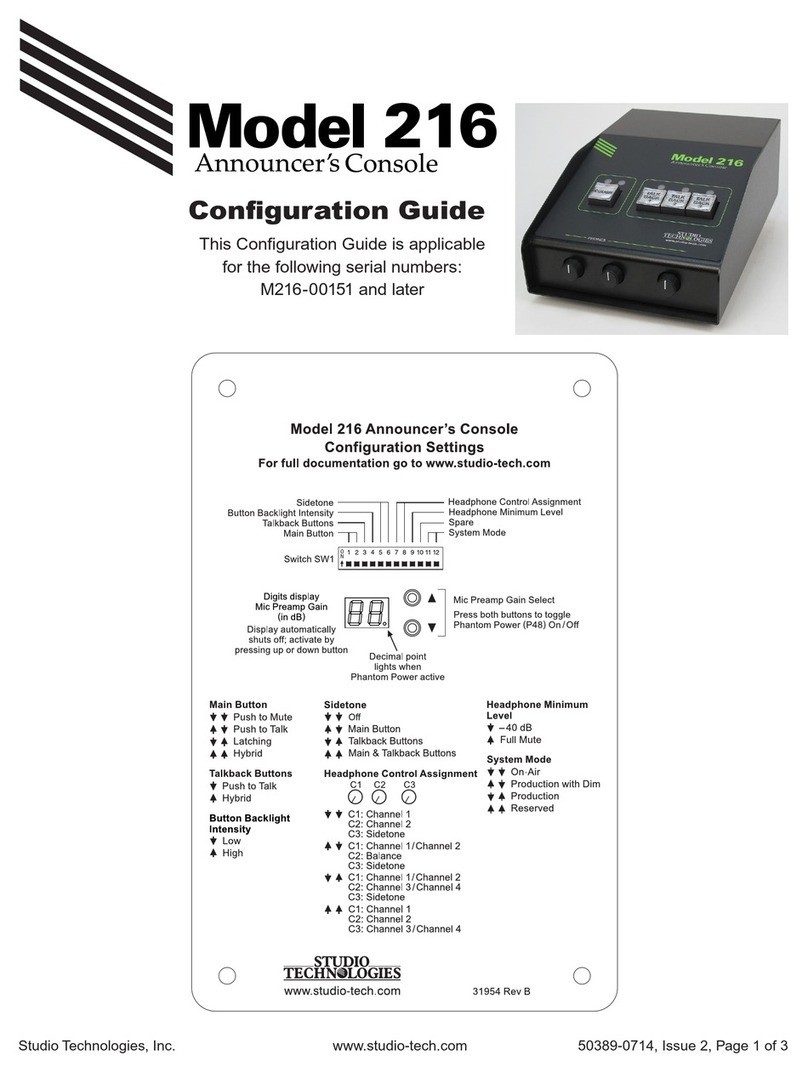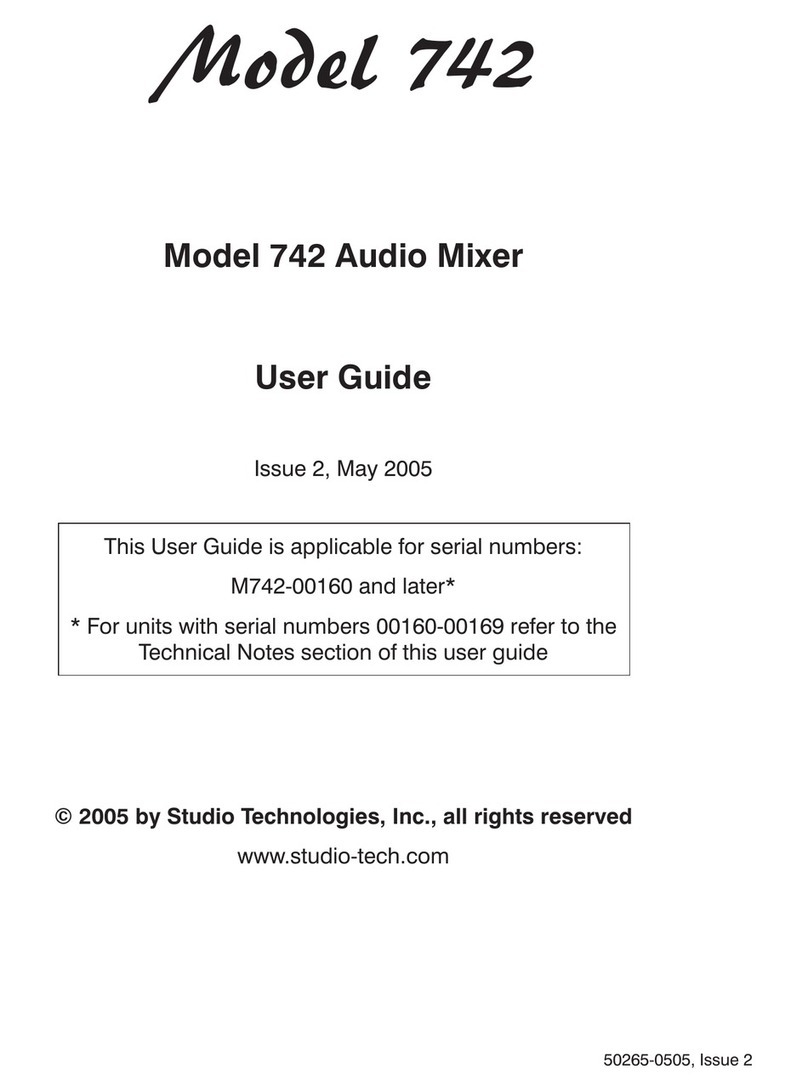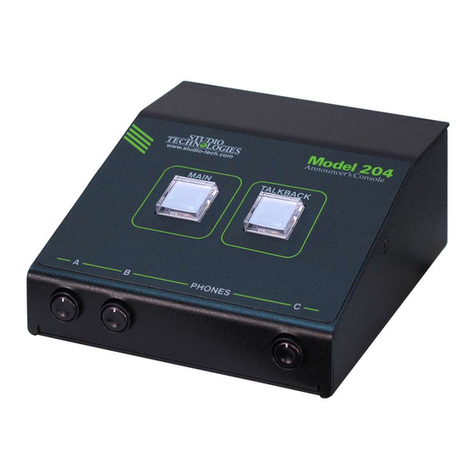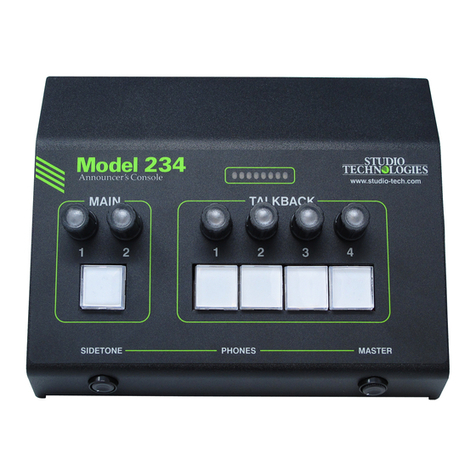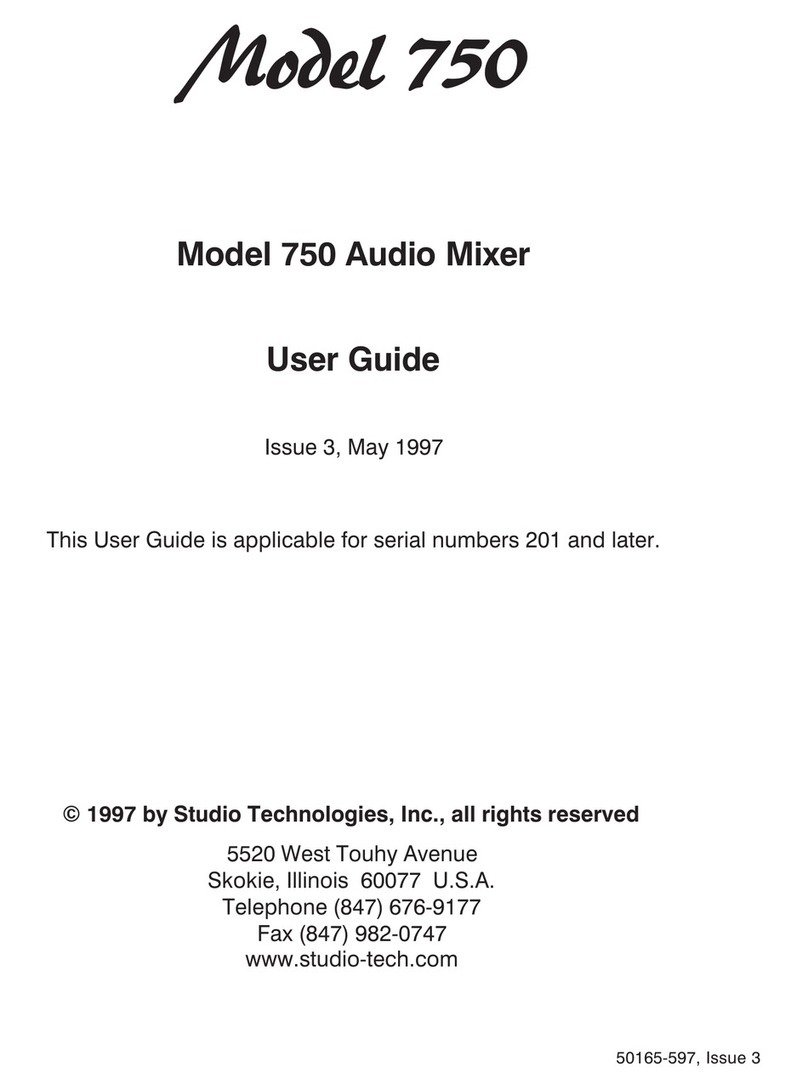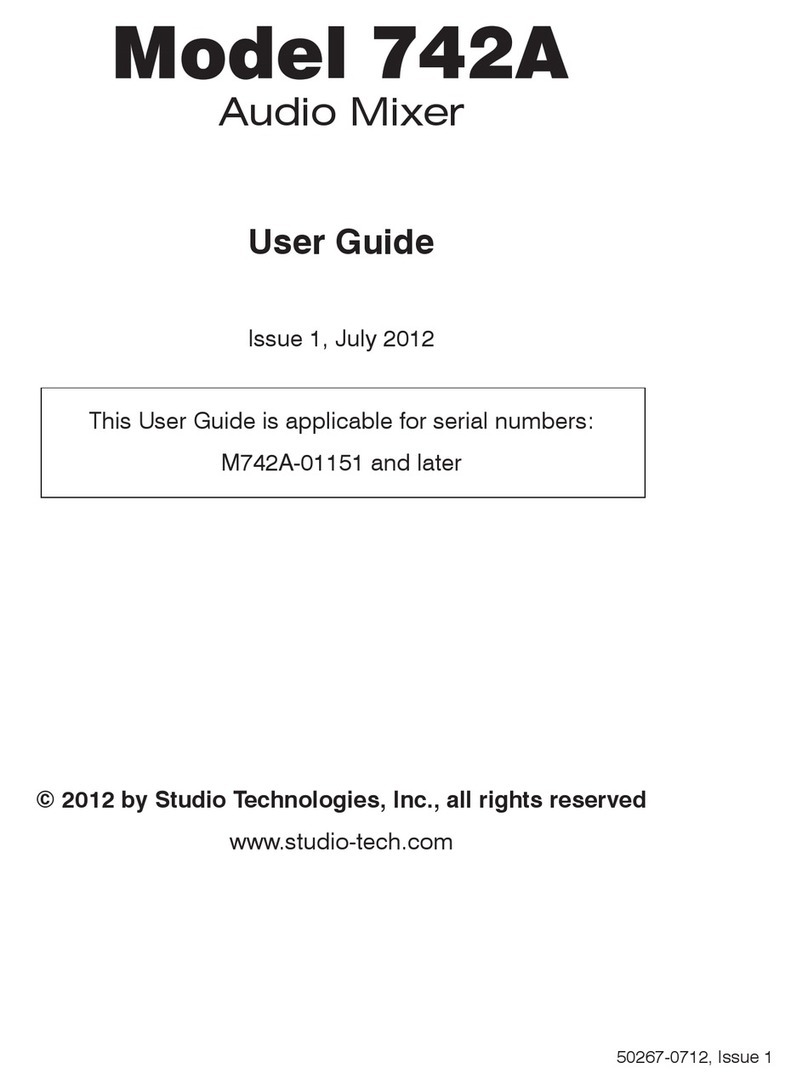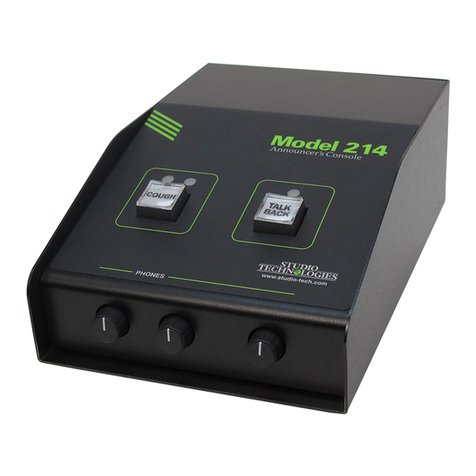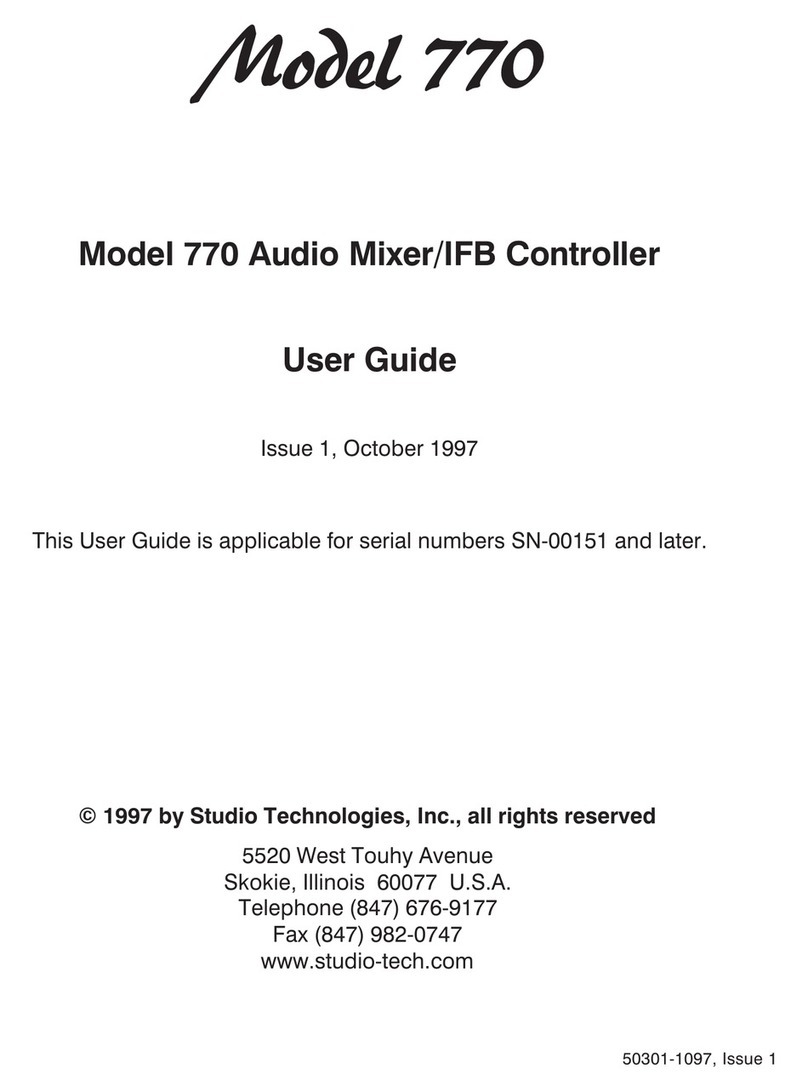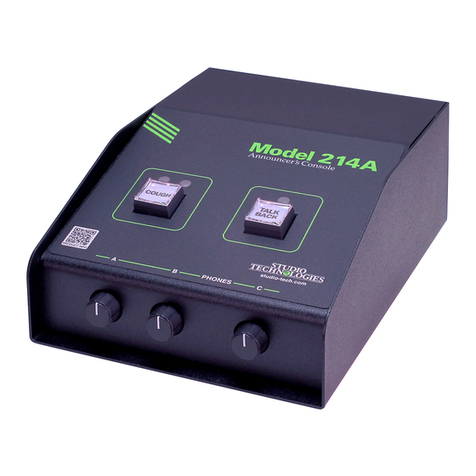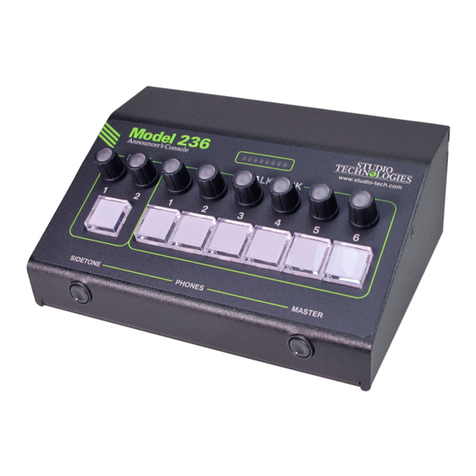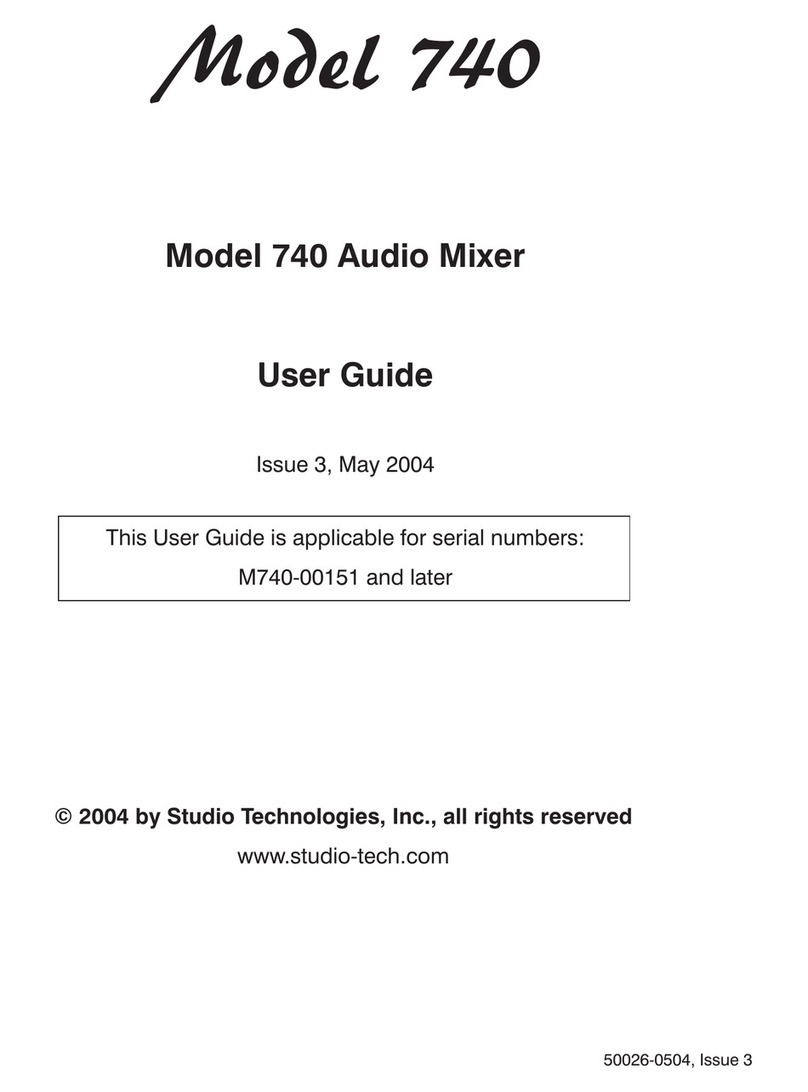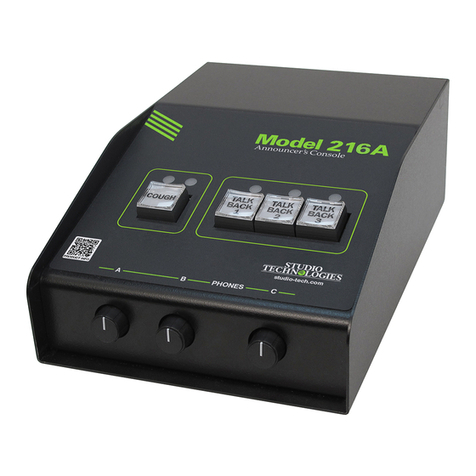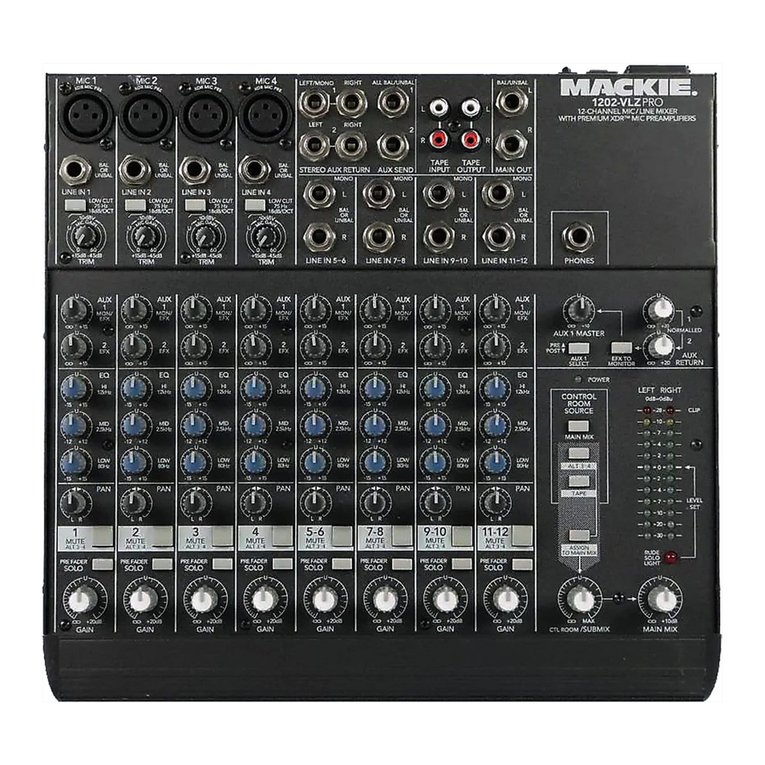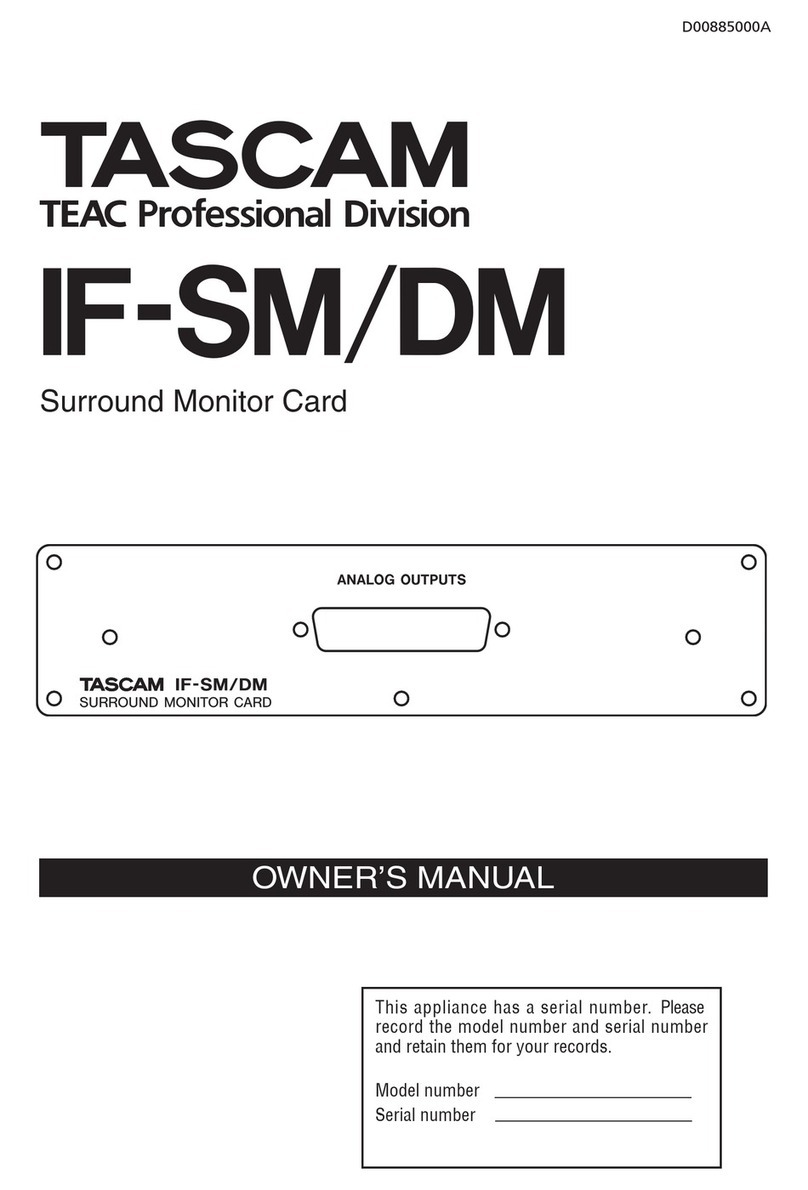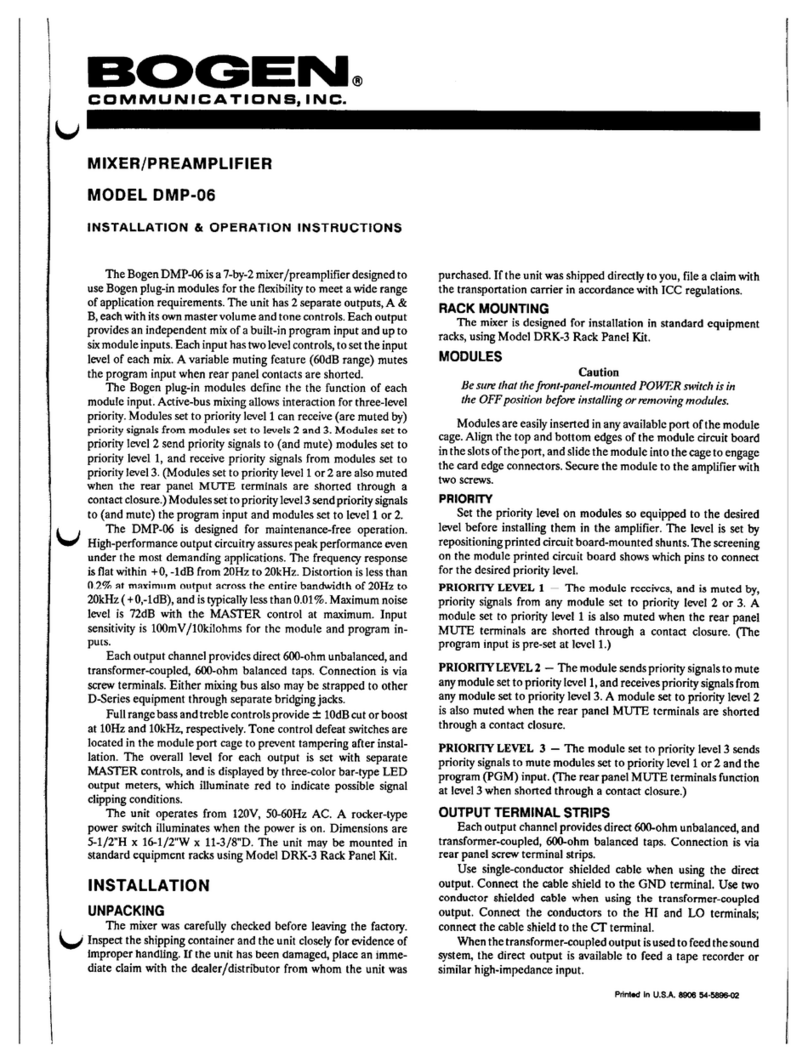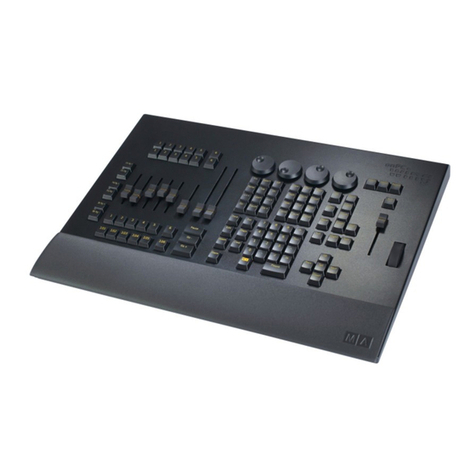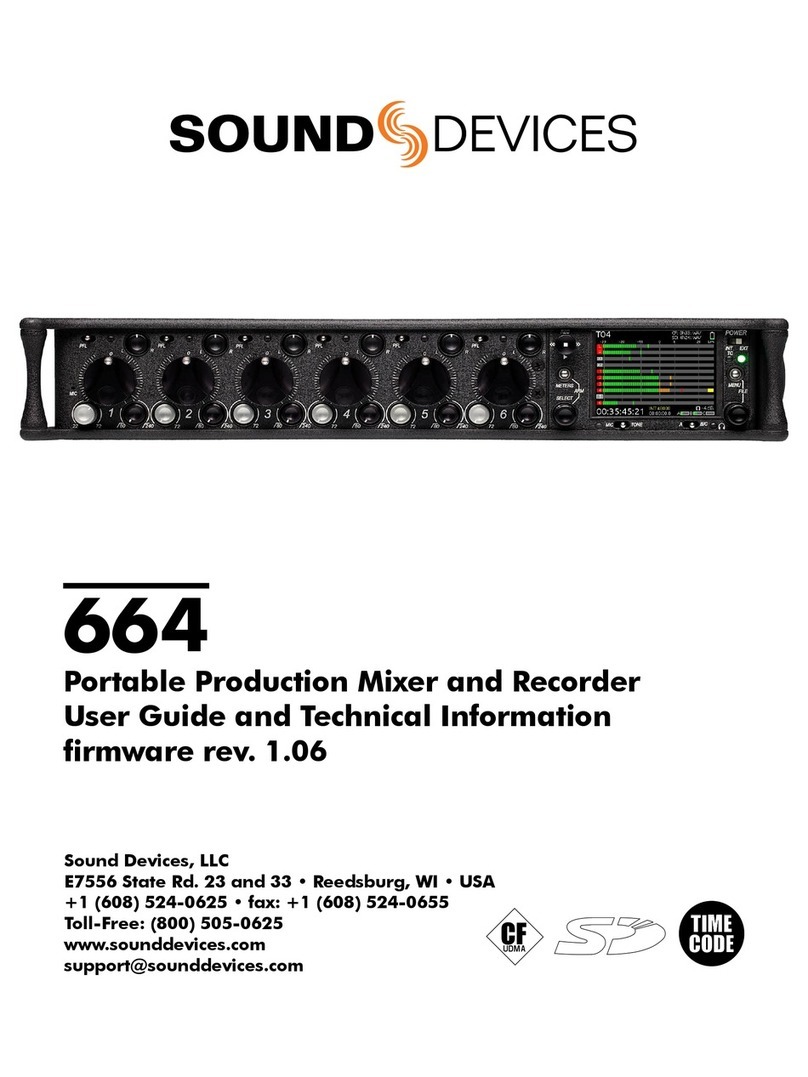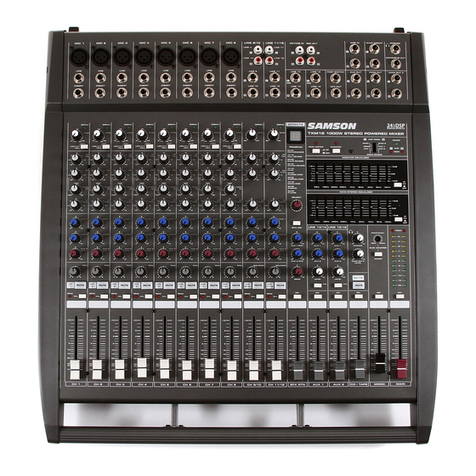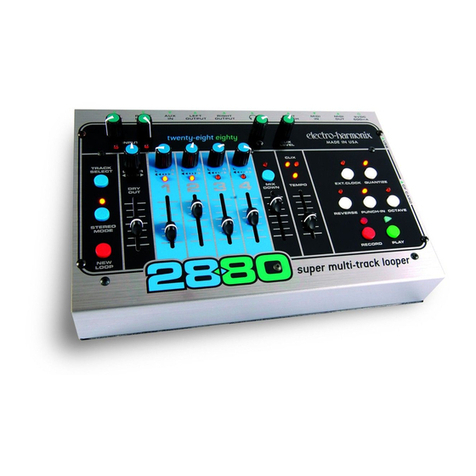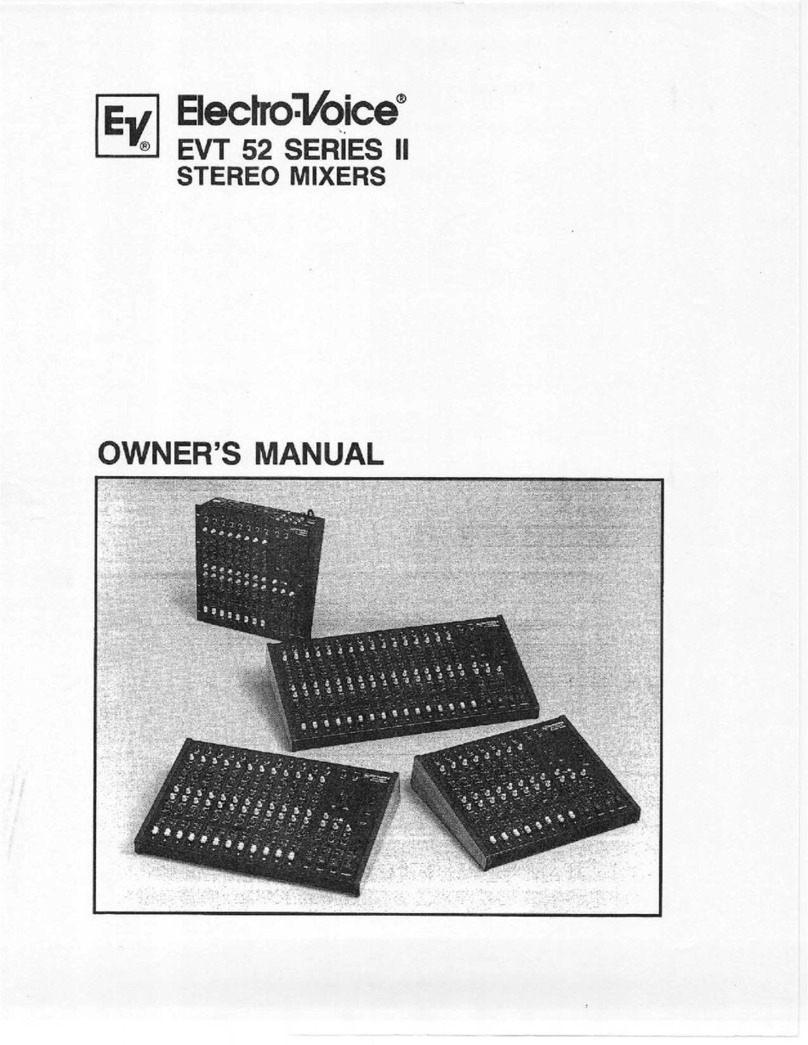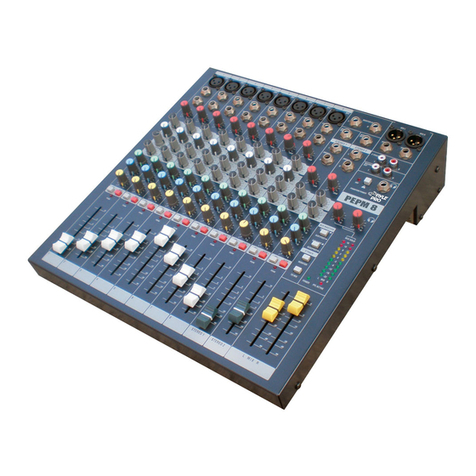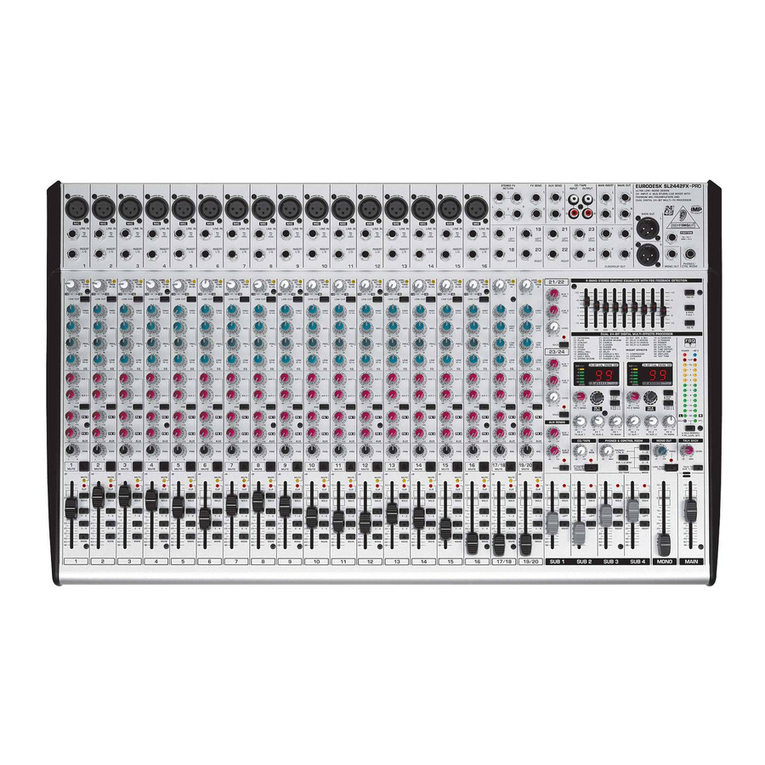
Model 211 User Guide Issue 1, December 2015
Studio Technologies, Inc. Page 11
Main Output
The main output is intended to be the “on-
air” signal that connects to the input of an
audio console. The output is transformer
balanced with a nominal signal level of
–2 dBu. The actual level will depend on the
gain setting of the microphone preampli-
fier, sensitivity of the microphone, and how
loudly the talent speaks into the micro-
phone. The transformer used in the main
output is intended for professional broad-
cast applications. It has a low output im-
pedance and can drive lengthy cable runs
with no difficulty. It is capable of driving 600
ohm loads but performs best with loads of
2 k ohms or greater. (This should not prove
to be an issue as virtually all contemporary
audio equipment has a relatively high input
impedance.) As the secondary winding of
the output transformer connects directly to
the main output connector, care should be
taken so that DC voltage is never present
on the interconnecting cable.
The main output is interfaced by means
of a 3-pin male XLR connector located on
the Model 211’s back panel. The intercon-
necting cable’s mating connector (female)
should be wired so that signal high (+ or
hot) is on pin 2 and signal low (– or cold)
is on pin 3. The cable’s shield can be con-
nected to pin 1, but it will have no function.
To limit the chance of grounding interaction
between the Model 211 and connected
equipment, pin 1 on the main output’s
connector is isolated from any point in the
Model 211. The fact that pin 1 “floats” will
minimize the chance of hums, noises, or
buzzes being present on the equipment
connected to the main output.
Talkback Output
The talkback output is intended for connec-
tion to control rooms, production trailers,
or other locations where talent- originated
voice cues are required. The talkback out-
put is transformer balanced with a nominal
level of +4 dBu. To enhance talkback audio
quality, the compressor circuit controls the
dynamic range of the signal coming from
the microphone preamplifier.
For protection against accidental connec-
tion to cables that have DC power present,
the talkback output is capacitor coupled.
Also in series with the talkback output con-
nections are 300 ohm resistors, making
the effective output impedance approxi-
mately 600 ohms. These resistors create
a passive summing network, allowing talk-
back outputs on multiple Model 211 units
to be connected together.
The talkback output is connected by way
of a 3-pin male XLR connector which is
located on the Model 211’s back panel.
A mating connector (female) should be
prepared so that signal high (+ or hot) is
expected on pin 2. Signal low (– or cold)
should be expected on pin 3. The cable’s
shield can be connected to pin 1. But, as
with the main output, in order to minimize
the chance that ground-interaction prob-
lems will arise, pin 1 of the talkback output
connector is isolated from the Model 211’s
chassis and circuitry. By making pin 1
“float,” the often-feared “ground loop”
problem shouldn’t arise.
The talkback output is intended to drive
lengthy cable runs that are frequently part
of a remote broadcast application. While
the talkback output circuitry is not intended
to be “on-air” quality, overall audio per-
formance should be very good. Devices
connected to the talkback output include
amplified loudspeakers, analog inputs on
intercom systems, and input channels as-
sociated with audio consoles. Connecting




















